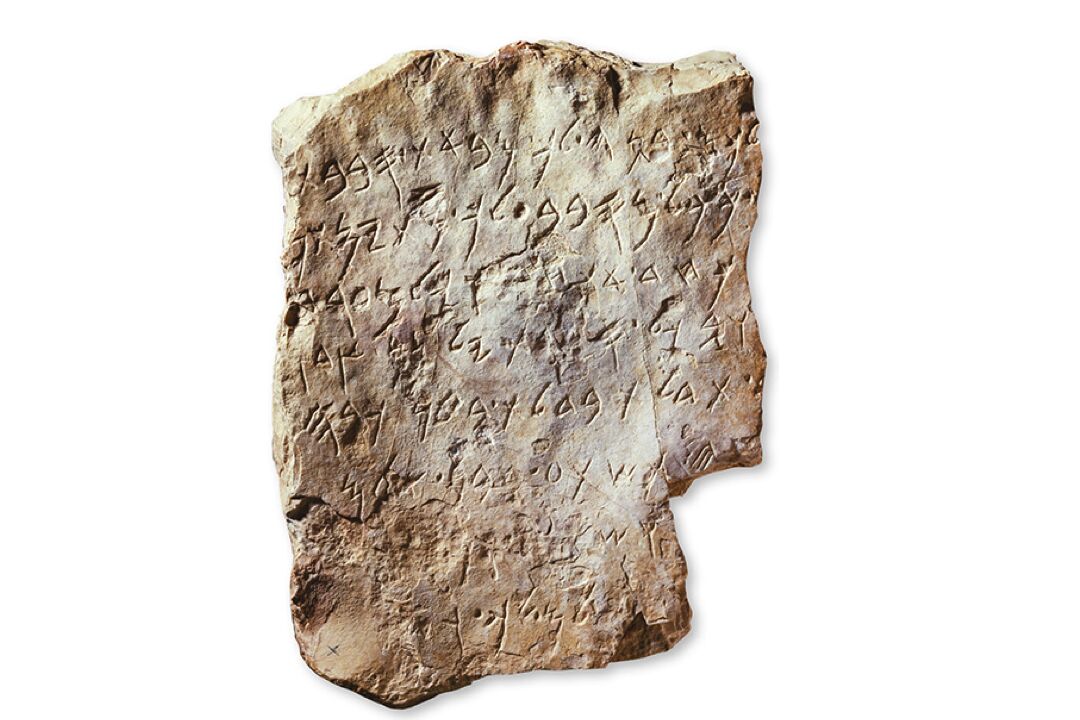The Hebrew Bible speaks at length about an early Ammonite civilization existing alongside the Israelites. The people of Ammon are referenced 123 times throughout the Bible. However, little archaeological evidence of the Ammonite civilization existed—until one remarkable find in 1961 supported the validity of the biblical account.
The 26-centimeter-tall and 19-centimeter-wide artifact is the earliest-dated Ammonite inscription of appreciable length. The white limestone slab, bearing eight lines of text with 93 preserved letters, was discovered during excavations at the citadel mound of Amman, Jordan, by the Department of Antiquities. It is the third-longest Semitic inscription found to date, after the Mesha Stele and the Siloam Inscription.
The Ammonite language is a related language to Hebrew. The inconsistency of the letters on the inscription suggests it was made by a novice scribe, as opposed to a skilled professional. The inscription reads:

[…Mi]lcom, has built for you entrances round about […
…] according to all that surrounds you from Tymtn [to …
…] what had been destroyed I … throughout the west […
…] and on every threshold … of the legitimate wall […
…] door, at the inner door he dug […
…] fear was among the men of the portico […
…] and safety […
…] peace to you and pe[ace …]
There are two important points to make about the inscription. First is the reference to the god Milcom, named as the “abomination of the children of Ammon” in the Hebrew Bible (1 Kings 11:5, 33; 2 Kings 23:13. While the reading “Milcom” is near certain, it is still missing the initial “mem” letter due to a break in the inscription). Milcom (also known as Molech) was the chief god in the Ammonite pantheon, worshiped through child sacrifice. Milcom is also referenced in several other later Ammonite inscriptions/seals, dating variously between the seventh and fifth centuries b.c.e.
Secondly, having been found in Iron Age ii layers dating somewhere between 1000–800 b.c.e., the inscription provides significant evidence of the early Ammonite civilization. Other archaeological evidence of Ammon exists only in a few seals, a short fragmentary inscription on a statue, and a very brief fragmentary stone inscription from the fifth century b.c.e. The large Amman Citadel Inscription helps to show that the Kingdom of Ammon was an early entity present alongside the early kingdoms of Israel and Judah, just as the Bible describes.
Alongside this inscription, other Ammonite artifacts have revealed the names Nahash and Hanun—validating the use of both of these names in the Bible for Ammonite individuals. And the name of Ammon itself lives on today, through Jordan’s capital city—Amman.
As with Ammon’s fellow kingdoms, Edom and Moab, comparatively few archaeological remains from Ammon have been discovered. Yet what has been discovered—and as time goes on, there is a growing trove—only serves to confirm what we already knew from the biblical account. Discoveries such as the Amman Citadel Inscription are helping prove the biblical history as accurate, one detail at a time.

